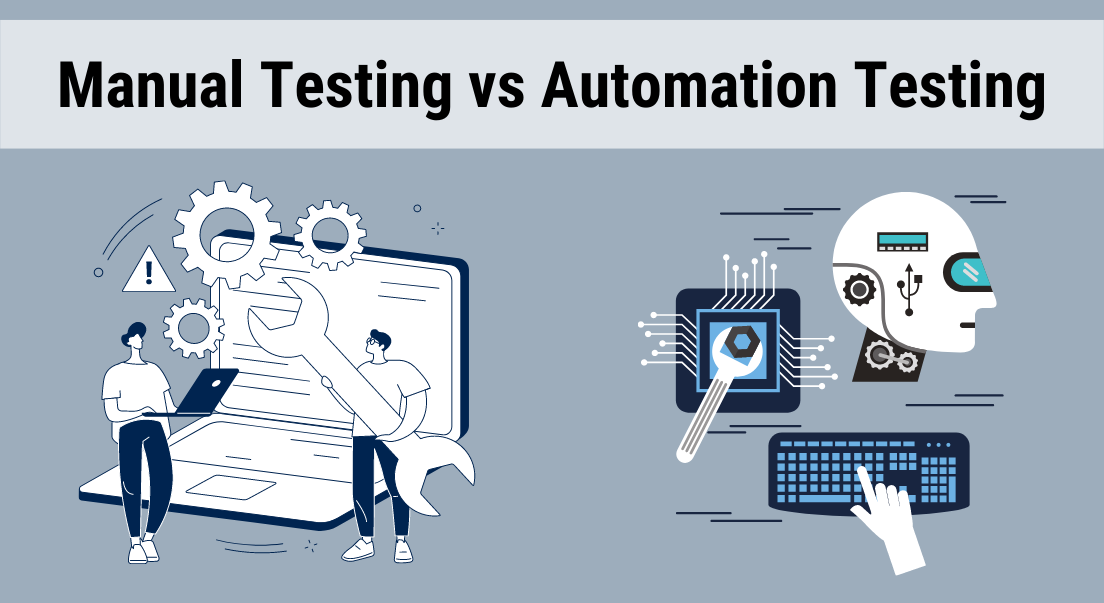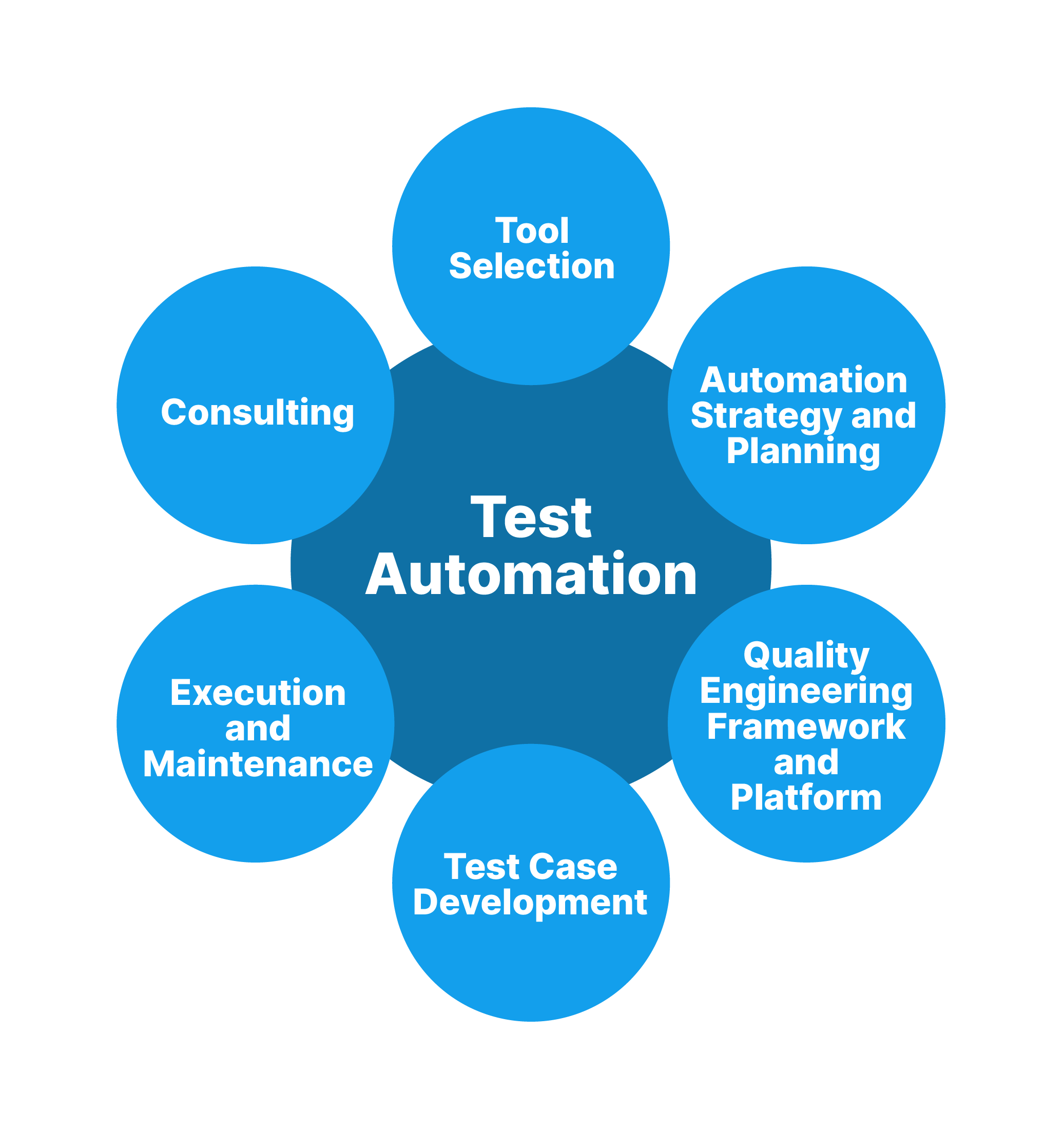Reliable Automation Testing: Enhancing Software Application Integrity and Speed
Reliable Automation Testing: Enhancing Software Application Integrity and Speed
Blog Article
Making Certain Success in Automation Checking: Secret Metrics, Difficulties, and Solutions Every QA Group Need To Know
In the realm of software application quality control, the landscape of automation testing is ever-evolving, requiring a careful approach to ensure seamless operations. Key metrics serve as the compass leading QA teams through the large terrain of examination automation, clarifying progress and areas for improvement. Difficulties impend large, frequently casting darkness on the course to success. By understanding these hurdles and implementing efficient options, QA groups can navigate via complexities with finesse. The trip to grasping automation screening is paved with subtleties that need an eager eye for tracking, analysis, and continuous improvement. automation testing. As the sector moves forward, the mission for ideal efficiency in automation screening continues to be a continuous search, urging QA teams to furnish themselves with the knowledge and strategies important for accomplishment.
Importance of Trick Metrics
Recognizing the significance of vital metrics is important for evaluating the efficiency and efficiency of automation testing processes. Trick metrics serve as measurable procedures that supply useful insights into different facets of the testing procedure, such as test insurance coverage, test implementation time, flaw thickness, and examination situation efficiency. By analyzing these metrics, QA groups can identify bottlenecks, inadequacies, and locations for renovation within their automation screening framework.
One crucial aspect of vital metrics is their capability to track progression and keep an eye on the total health of the screening process (automation testing). They enable stakeholders to make enlightened decisions based upon data-driven understandings, which can lead to more efficient screening methods and much better resource appropriation. In addition, crucial metrics can help groups set reasonable goals, measure the success of automation efforts, and demonstrate the ROI of automation testing efforts

Typical Obstacles Faced
Difficulties frequently run into in automation screening procedures can dramatically impact the overall performance and effectiveness of QA teams. One of the significant obstacles is the selection of the ideal examination instances for automation. Not all test instances are suitable for automation, and selecting the incorrect ones can cause thrown away time and resources. Furthermore, maintaining test scripts can be a challenging job, particularly as the application goes through constant modifications. Test manuscript maintenance requires constant updates and alterations to guarantee they reflect the present functionality properly. Another usual obstacle is the initial financial investment required for establishing automation structures and tools. This can be a barrier for some organizations, particularly smaller sized ones with limited budgets. Additionally, automation screening may not cover all aspects of screening, such as usability and customer experience testing, which still call for manual treatment. Conquering these challenges requires correct planning, critical test situation choice, durable maintenance procedures, sufficient sources, and a clear understanding of the limitations of automation screening.
Reliable Solutions for Obstacles
To deal with the obstacles experienced in automation testing, applying efficient services is vital for enhancing the performance and productivity of QA teams. One essential remedy is to purchase robust training programs for QA teams to guarantee they have the needed abilities to properly use automation tools. Training can bridge expertise voids, improve understanding of automation structures, and improve scripting capacities, eventually bring about much more effective test production and execution.
One more crucial option is to establish clear communication channels within the QA team and with various other stakeholders, such as developers and task supervisors. Reliable interaction assists in aligning expectations, sharing progression updates, and immediately addressing issues or barricades that may emerge throughout the automation screening process.

Tracking and Analysis Strategies
Applying reliable tracking and analysis techniques is crucial for making certain the success and performance of automation screening procedures. By making use of monitoring tools, QA teams can track the performance of test scripts, identify traffic jams, and pinpoint locations for improvement. Real-time surveillance permits fast detection of problems, making it possible for rapid action and resolution. Furthermore, examining examination results and metrics supplies valuable insights right into the high quality of the software being examined and the performance of the screening technique.
One trick strategy in tracking and evaluation is the usage of control panels that settle relevant metrics and KPIs in an aesthetically accessible format. These dashboards use a comprehensive overview of examination execution condition, examination protection, issue trends, and other important details. Consistently evaluating and analyzing these dashboards can assist QA her latest blog groups make notified decisions, focus on jobs, and optimize testing efforts.
Additionally, applying automated signals and notices based on predefined limits can enhance aggressive monitoring and prompt intervention. By establishing up signals for performance discrepancies or examination failings, groups can deal with issues immediately and prevent them from escalating. On the whole, monitoring and evaluation methods play an essential duty in making sure the performance and success of automation testing efforts.
Continual Enhancement Approaches
Enhancing the efficiency of automation testing processes necessitates the consistent refinement of methods and approaches. Continual improvement strategies are essential for QA teams to adapt to advancing modern technologies and provide top notch software. One key technique to improving automation testing procedures is to conduct routine reviews and retrospectives. By analyzing past testing cycles, groups can determine traffic jams, inadequacies, and areas for enhancement. Executing responses loopholes and incorporating lessons discovered right into future screening structures can generate substantial enhancements gradually.

Conclusion
Finally, it is important for QA teams to recognize the key metrics, obstacles, and options in automation testing to ensure success. By very carefully checking and analyzing data, carrying out reliable options to typical challenges, and continuously improving approaches, QA groups can optimize their screening procedures and supply top notch software program products. Complying with these practices will inevitably result in more reliable and efficient automation screening practices.
By analyzing these metrics, QA groups can identify bottlenecks, inadequacies, and areas for renovation within their automation screening framework.
Furthermore, crucial metrics can assist groups established practical goals, gauge the success of automation campaigns, and demonstrate the ROI of automation screening efforts.
Obstacles commonly encountered in automation screening processes can dramatically impact the overall performance and efficiency of QA groups. Automation testing might not cover all aspects of testing, such as use and customer experience testing, which still require hand-operated treatment.In final thought, it is essential for QA groups to recognize the essential metrics, difficulties, and see this options in automation testing to make certain success.
Report this page